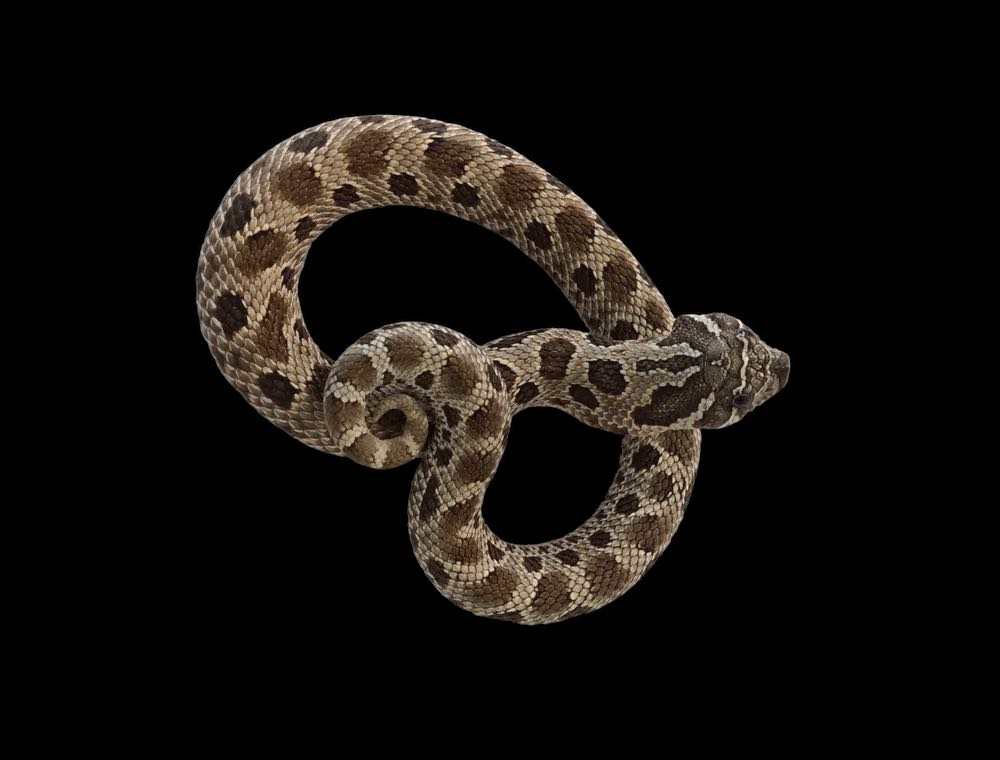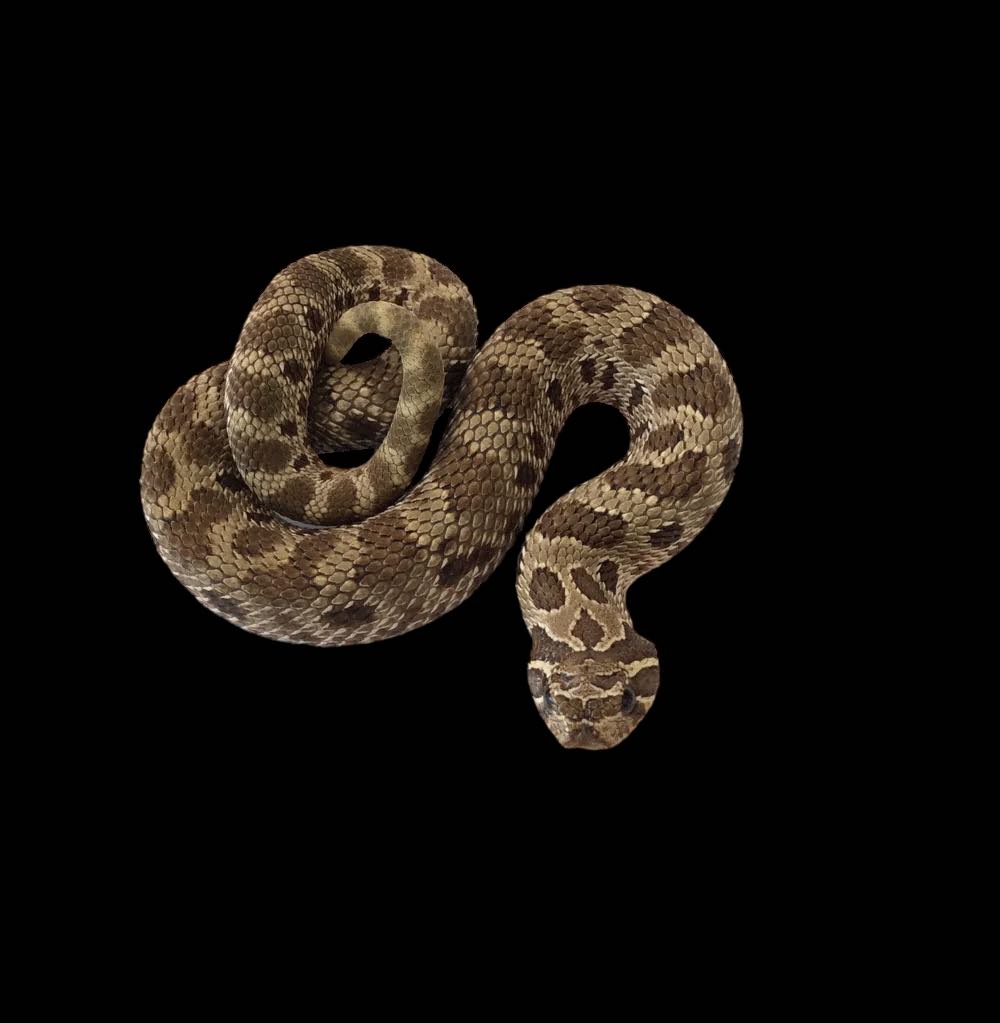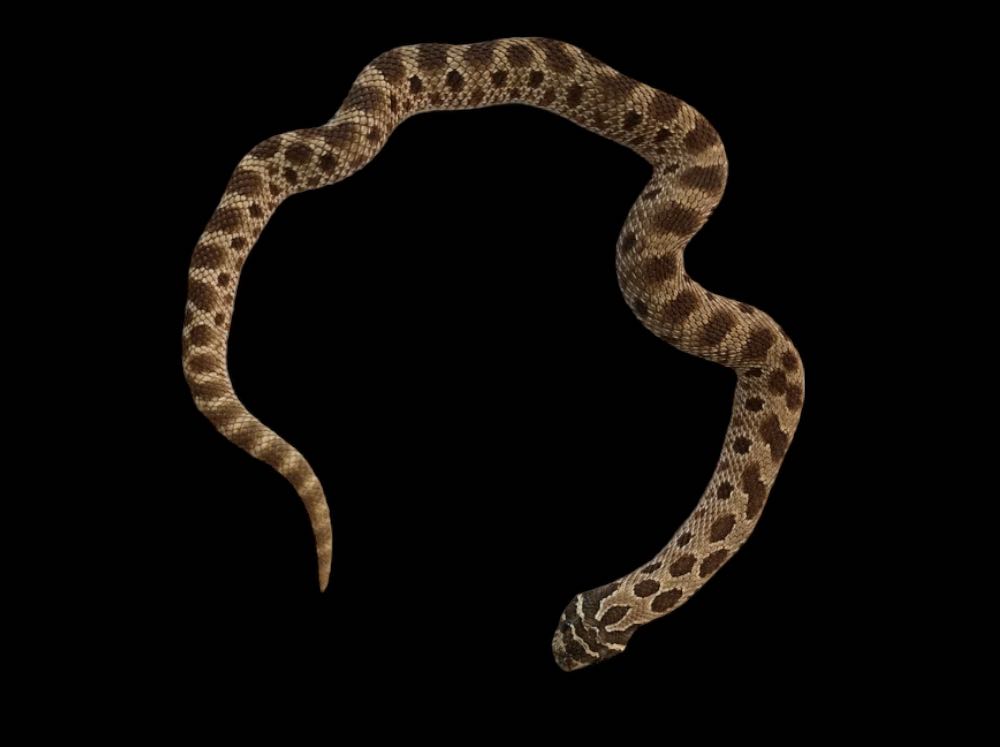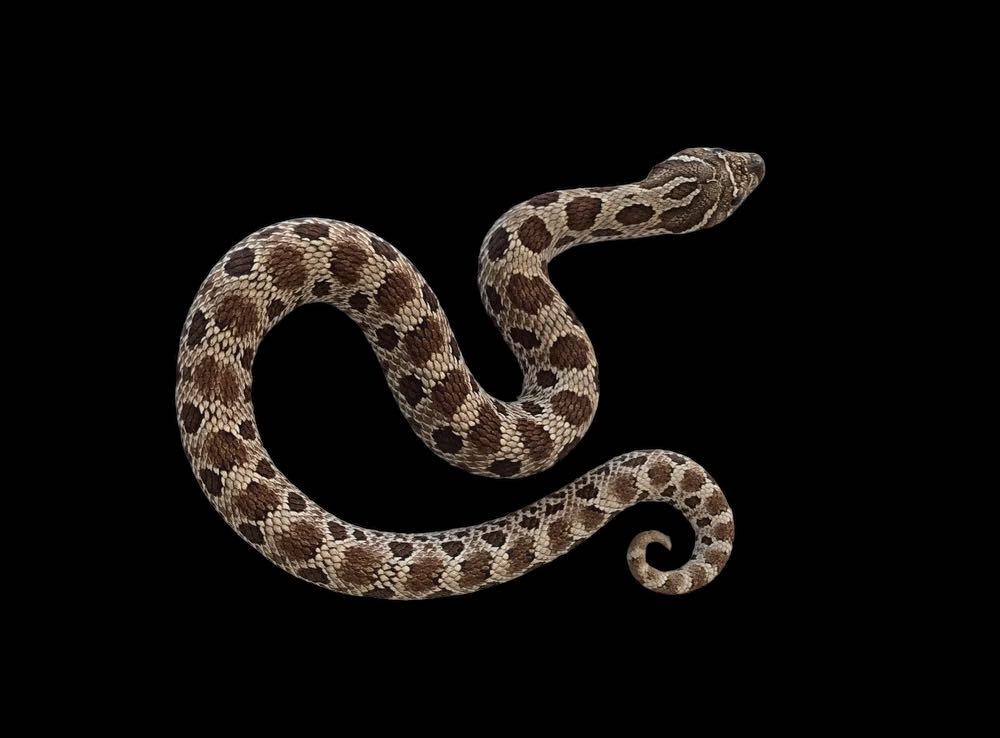Photo Disclaimer
Description
Western Hognose (Anaconda het. Snow)
Scientific Name: Heterodon nasicus
Common Name: Western Hognose Snake
Species Overview
Size: Adult females typically reach 2–3 feet (0.6–0.9 m) in length, while males average 1.5–2 feet (0.45–0.6 m). Both sexes feature the species’ characteristic upturned snout, adapted for digging and burrowing in loose soils.
Appearance: The Anaconda het. Snow Western Hognose is a clean, visually refined morph combining a visible pattern reduction gene with hidden potential for one of the most striking double recessive combinations. The Anaconda gene scatters and reduces dorsal blotches, producing a minimal, smooth appearance with softened transitions between the base colour and pattern. Shades range from sandy tan to light brown with muted dark markings. Though the Snow morph is not visually expressed here, carrying both the Albino and Axanthic genes offers the potential for pure white, pink-eyed offspring when paired with compatible mates. The result is a simple yet elegant snake with excellent genetic depth.
Distribution: Native to central North America, from southern Canada through the Great Plains and into northern Mexico.
Habitat: Western Hognose Snakes inhabit open prairies, grasslands, and semi-arid regions with sandy or loose soil ideal for burrowing. In captivity, this morph thrives in terrestrial terrariums with soft substrate, climbing décor, and secure hiding areas.
Behaviour: Western Hognoses are diurnal, curious, and alert snakes known for their dramatic bluff displays, which may include hissing, neck flattening, or mock strikes. These displays are harmless, and with regular handling, they settle into confident, inquisitive animals.
Captive Care
Enclosure: Provide an enclosure at least 3 feet × 18 inches × 18 inches for adults, using deep, soft substrate such as aspen, soil, or a sand-soil blend. Include multiple hides, smooth décor, and low branches for enrichment.
Temperature & Humidity: Maintain a daytime gradient of 78–86°F (25–30°C) with a basking area near 90°F (32°C). Allow nighttime drops to 70–74°F (21–23°C). Keep humidity between 30–50%, slightly increasing during shedding.
Diet: Offer thawed rodents approximately 1.25× the width of the snake’s mid-body. Feed juveniles every 4–5 days and adults every 7–10 days. Western Hognoses are reliable feeders that adapt easily to routine schedules.
Behaviour in Captivity: Hardy, engaging, and active, Western Hognoses thrive with consistent care and stable conditions. They are often seen burrowing or exploring during daylight hours and tolerate handling well once accustomed.
Special Considerations: Western Hognoses are mildly rear-fanged, and their venom poses minimal risk to humans unless an allergic reaction occurs. Handle calmly and house them individually to avoid feeding-related aggression or stress.
Genetics Note
Anaconda (Incomplete Dominant): Reduces and scatters dorsal blotches, producing a cleaner, minimalistic appearance. Super Anaconda (homozygous) forms are nearly patternless.
het. Snow (Double Recessive Carrier): Carries one copy each of the Albino and Axanthic genes. When visual, the Snow morph produces a pure white, pink-eyed snake. (“het” is short for heterozygous, meaning one copy of each gene is carried but not expressed.)
Genetic Combination Summary
The Western Hognose (Anaconda het. Snow) expresses one visible incomplete dominant trait and carries a double recessive combination:
-
Anaconda (Incomplete Dominant): Reduces patterning and softens contrast.
-
het. Snow (Double Recessive Carrier): Carries both Albino and Axanthic genes, enabling Snow offspring when paired with compatible mates.
This combination results in a visually subtle yet genetically versatile morph. The Anaconda het. Snow Western Hognose is prized by breeders for its clean patterning and potential to produce high-contrast, pure white Snow and Super Anaconda offspring.




